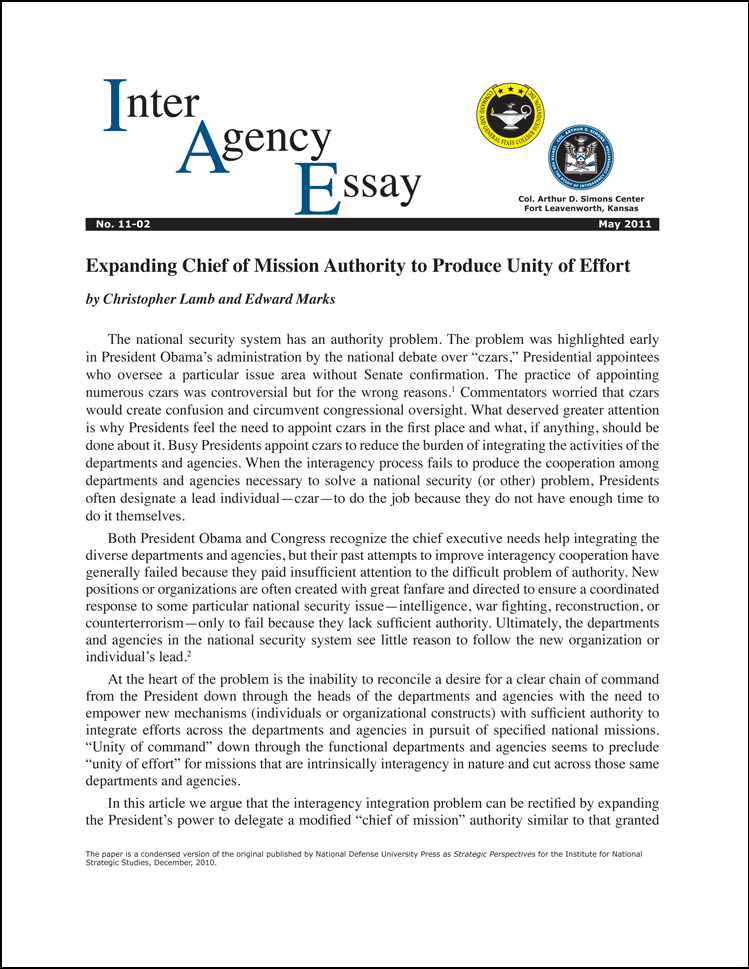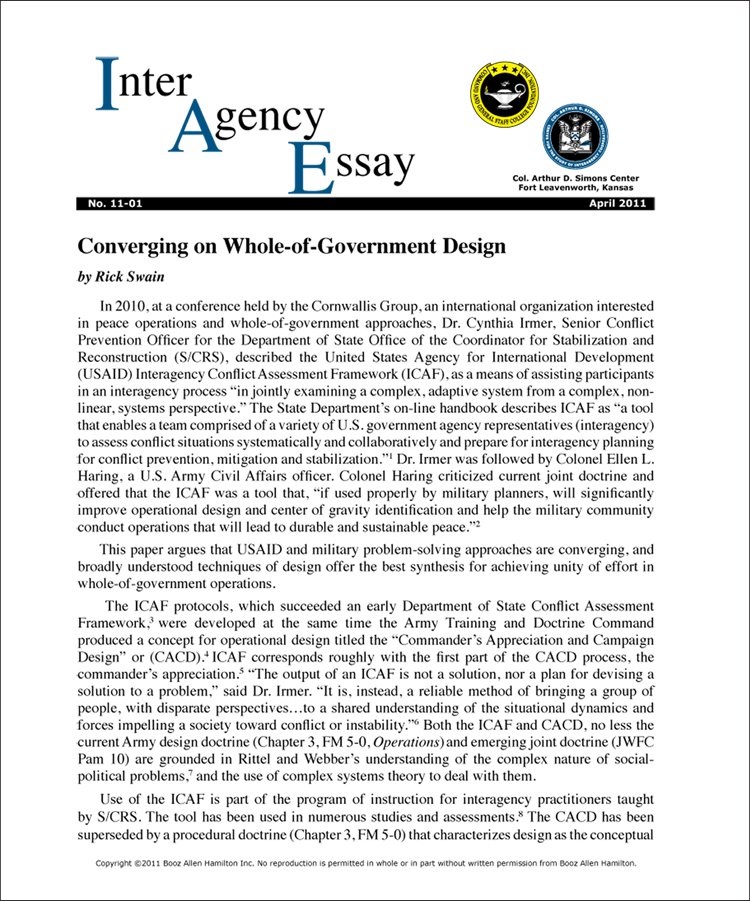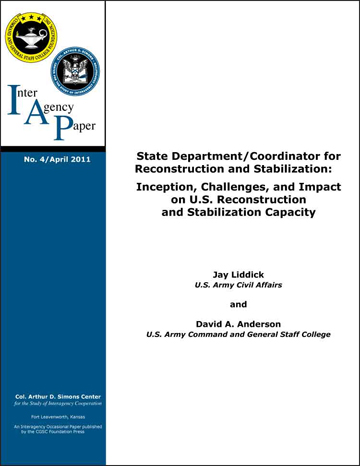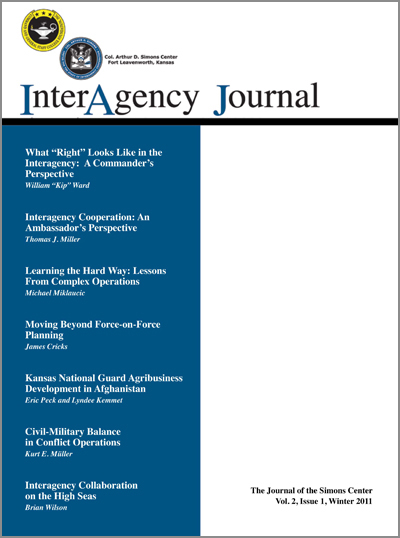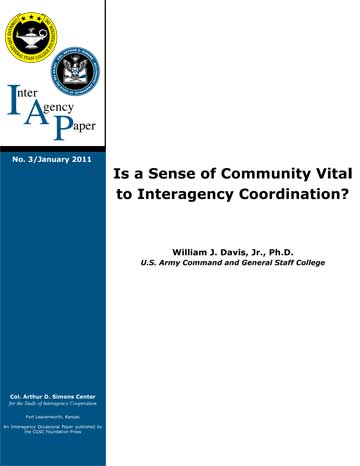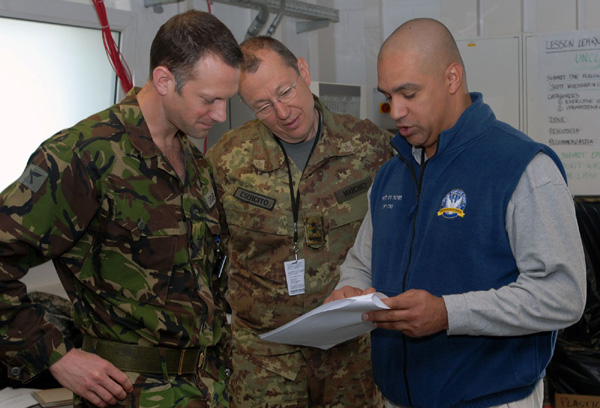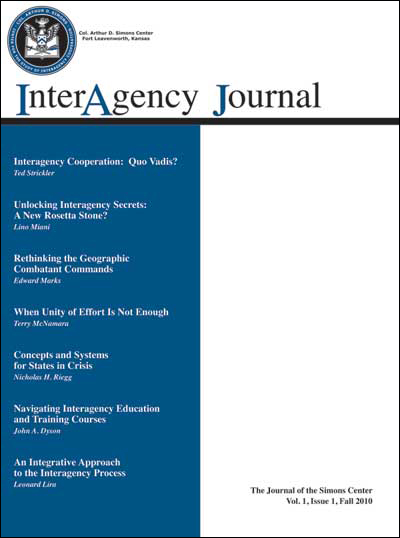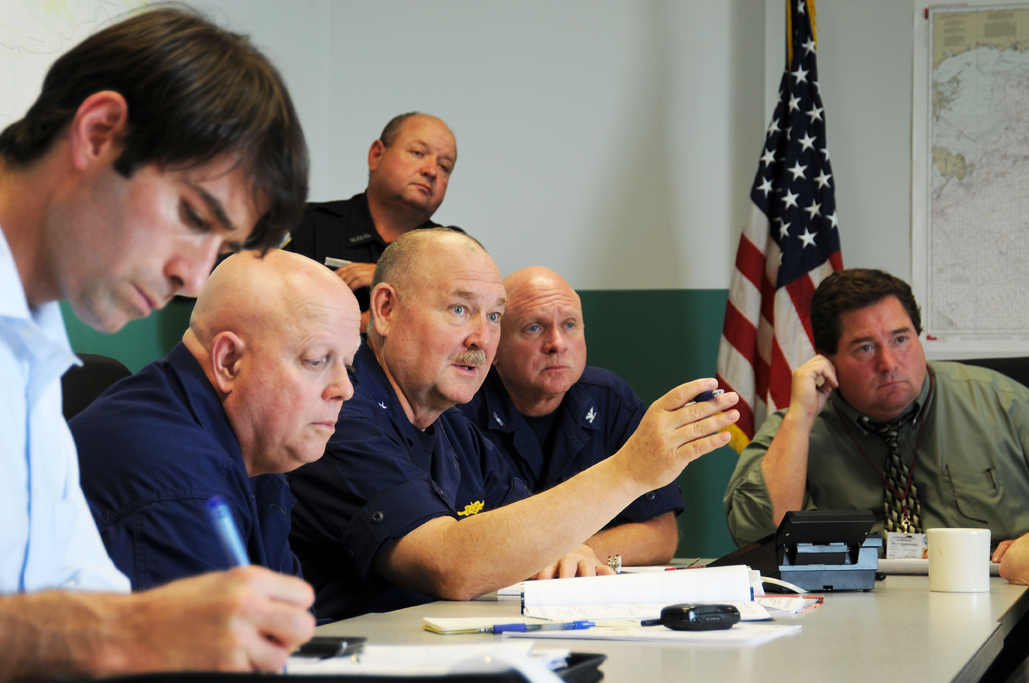Publications
The Simons Center Publications
The Simons Center is committed to the development of military leaders with interagency operational skills and an interagency body of knowledge that facilitates broader and more effective cooperation and policy implementation within the United States government. As part of this mission, the Simons Center produces a number of publications that cover a broad range of interagency topics including national security; leader development; ethics; counterterrorism; stabilization and reconstruction operations; homeland defense and security; and disaster preparation and response. The Simons Center’s main publications include the:
The InterAgency Journal (IAJ) is a peer-reviewed, national security studies journal, published semiannually. Journal articles are approximately 3,000 to 5,000 words in length.
The InterAgency Essay (IAE) series consists of individually published essays of 1,000 and 3,000 words in length that are not peer-reviewed.
The InterAgency Paper (IAP) series includes in-depth studies, individually published, of approximately 5,000 to 10,000 words in length. IAP submissions are peer-reviewed.
The InterAgency Studies (IAS) series consist if sponsored projects of the Simons Center on a particular issue and may include multiple articles or essays.
Other publications include special reports, web-exclusive publications and books. See the Simons Center Publication Descriptions for further information on each of our publication types.
Individuals wishing to receive hard copies of Simons Center’s InterAgency Journal should contact editor@thesimonscenter.org. To receive updates about the release of new Simons Center publications, Simons Center news and events, and other interagency news and events via email, please sign up for email alerts – an email alert sign up is available on most every page of the Simons Center website.
The Simons Center is always looking for authors to contribute manuscripts reflecting their experience, study, and insight. Please go to our Contribute Content page for complete submission instructions.
Disclaimer: The works published by the Simons Center represent the opinions of the authors and do not reflect the official views of any United States government agency, the Department of Defense, the Department of the Army, the U.S. Army Command and General Staff College, the Command and General Staff College Foundation, the Simons Center, or any other non-government, private, public, or international organization.
by Christopher Lamb and Edward Marks
In this essay we argue that the interagency integration problem can be rectified by expanding the President’s power to delegate a modified “chief of mission” authority similar to that granted ambassadors to oversee and direct the activities of employees from diverse government organizations working in a foreign country…
... Read Moreby Rick Swain
This paper argues that USAID and military problem-solving approaches are converging, and broadly understood techniques of design offer the best synthesis for achieving unity of effort in whole-of-government operations.
... Read Moreby Major Jay Liddick and Dr. David A. Anderson
Like the post-9/11 Bush administration, the Obama administration must confront numerous security threats to U.S. national interests at home and abroad. The Obama administration, however, has the added challenge of a severe domestic economic recession. Amidst the economic quandary, President Obama and Congress must prudently go about the arduous task of determining how to best utilize U.S. resources to mitigate national security threats in a domestic environment demanding fiscal discipline.
... Read MoreInside this issue: What “right” looks like in the Interagency: A Commander’s Perspective, by Gen. William “Kip” Ward; Interagency Cooperation: An Ambassador’s Perspective, by Thomas J. Miller…and much more.
... Read Moreby William J. Davis, Jr., Ph.D.
What causes a large group to operate in an efficient, effective, innovative manner? Is it the way it is organized, its executive structure, its mechanisms for gathering and disseminating information, its internal communications, its analytic capacity, its contributions from staff, its morale, or its sense of community?
... Read Moreby Nicholas H. Riegg
The military’s relatively new “full spectrum” approach to warfare emphasizes that military and other U.S. interagency partners must address the full gamut of needs of nations defeated in war or ravaged by natural or manmade catastrophes.
... Read Moreby Major Edward Lee Bryan, U.S. Army &
Lieutenant Colonel David Pendall, U.S. Army
For years, the federal government has grappled with the question of how best to consolidate its response to a major crisis—that is, to share relevant information to create unity of purpose while preserving the operational effectiveness of each agency or component…
... Read MoreInterAgency Journal, Volume 1, Issue 1, Fall 2010– This is our inaugural edition of this semi-annual journal.
... Read Moreby Karisha Kuypers, U.S. Department of Agriculture, and
Professor David A. Anderson, U.S. Army Command and General Staff College
To assist the nation in rebuilding its agricultural economy, the U.S. Department of Agriculture (USDA) has provided advisors who have worked on Provincial Reconstruction Teams (PRTs). Based largely on their end-of-tour reports, this paper examines and evaluates the challenges, successes, and modes of interaction of USDA advisors with their PRT and Afghan colleagues and concludes with recommendations for the future.
... Read Moreby Bob Ulin
In recent years there has been much discussion, frustration and angst about the lack of cooperation and coordination between and among agencies and departments of the federal government in response to disasters (natural and manmade) and overseas contingencies…
... Read More"*" indicates required fields
